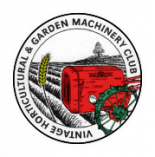Home › Forums › The Main Forum Area › General talk and discussion › Aluminium corrosion / rust.
- This topic has 22 replies, 7 voices, and was last updated 11 years, 9 months ago by
 vhgmcbuddy.
vhgmcbuddy.
-
AuthorPosts
-
January 8, 2014 at 1:08 pm #4974
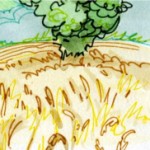 vhgmcbuddyMember
vhgmcbuddyMemberI’ve read so much on the net concerning treatment for aluminium corrosion, I am confused . com. I was wondering if anyone had used something that works to prevent it, every year I clean the wheel horse deck and coat with waxoyl, But the spindle holders have this white deposit and are gradually being eat away. Thanks Owen.
January 8, 2014 at 1:59 pm #4976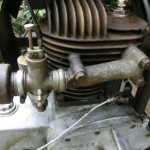 wristpinParticipant
wristpinParticipantI seem to remember being told that the initial layer of oxide/corrosion would protect the underlying metal from further deterioration . That was the theory but in practice it does seem a bit different.
That said, the acids produced by a damp poultice of festering grass (and worse!) does seem to have the ability to corrode things like spindle housings to the point of destruction. “In season” in practical terms there is not a lot that you can do – weekly under deck hosing or pressure washing is not only a messy operation but can have undesirable effects to bearings etc.
Out of season with a dry deck I would suggest dry cleaning with a scraper and stiff brush (not wire) to clean off the crud but leaving the oxide layer and then give the housings a heavy coat of a waxoyl type product or heavy grease to exclude air.
When I was in business we used to coat the underside of “winter service” decks with “soft grease” -a brew much loved by the military back in the 50/60s for coating the underside of “mothballed”equipment and made by mixing heavy grease and engine oil and stirring to a semi fluid consistency and liberally applying with a wide paint brush. Our lubricant supplier used to offer us dented and damaged drums of grease at an acceptable price!January 8, 2014 at 7:30 pm #4977 vhgmcbuddyMember
vhgmcbuddyMemberOwen I have come across this problem many times especially on older range rovers. the rear window and tail gate are two separate items . now the tail gate especially has problems on the lower hinges and the customers commented that rust was appearing in that area. on speaking with land rover they told me that when alloy and steel are mixed,i,e like the hinge and door a electrical force traveling between the two causes the furriness as you describe. your deck will be a mixture of both products and the one way you can stop it is to isolate all contact points on the joining process. its just one of lifes irritating problems.
January 8, 2014 at 7:33 pm #4978 vhgmcbuddyMember
vhgmcbuddyMemberThanks Angus, I will try the grease plastered on, the waxoyl once a year works fine on the rest of the deck and has probably helped the spindle holders somewhat. One thing amongst all I read, that might tie in with your grease excluding the air. Was to paint corroded area with galvanise paint, that’s when it’s clean. Seeing there’s three of them I might try two with grease and the other with galvanise paint and see what they look like end of this season.
Thanks John. I thing the spindle holders wouldn’t stand up to separating from steel deck. All these things make it more interesting.
January 9, 2014 at 10:08 am #4982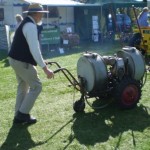 will-haggleParticipant
will-haggleParticipantThere was a report on BBC News this morning about a Dornier Bomber which was rescued from the sea, here’s a link to the story, this story is from 26th June 2013….
January 9, 2014 at 10:56 am #4983 wristpinParticipant
wristpinParticipantAnything that excludes air and moisture has to be better than nothing . Not sure if I have read your post about galvo correctly but while being fine for steel it is unlikely to be beneficial for aluminium alloys.
My guess is that if money was no object a new bearing housing given a couple of coats of epoxy primer would be the way to go, but to get an existing housing clean enough fot that to be effective would possibly destroy it.
I put a new deck shell onto a little Husky for the brother in law down in Somerset in the summer and fortunately went armed with a pair of good used bearing housings as his were crumbling away to nothing.January 9, 2014 at 11:02 am #4984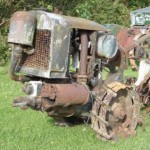 charlieKeymaster
charlieKeymasterElectrolytic corrosion where aluminium and steel is a major problem on things like Land Rover especially when salt is added. One problem painting aluminium is getting a clean surface, an etch primer is essential.
January 9, 2014 at 12:57 pm #4985 vhgmcbuddyMember
vhgmcbuddyMemberThanks to you all for your help and suggestions, I will stick to my original plan with the addition of etch primer.
January 9, 2014 at 12:57 pm #4986 wristpinParticipant
wristpinParticipantElectrolytic corrosion where aluminium and steel is a major problem on things like Land Rover especially when salt is added. One problem painting aluminium is getting a clean surface, an etch primer is essential.
Read an interesting article a while back warning against using a copper based anti seize compound such as Copaslip on steel bolts going into aluminium castings as it introduced a third element into the electrolytic corrosion equation. Have to plead guilty to that in the past. This particular article concerned Hillman Imp head bolts and the author’s recommendation to prevent thread galling was a drop of EP gear oil.
January 10, 2014 at 9:04 am #5002 charlieKeymaster
charlieKeymasterI have been using a well known copper grease for years on the Land Rover and have not found any problems.
January 10, 2014 at 10:21 am #5003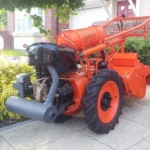 darmic1Participant
darmic1ParticipantHaving worked in the motor trade for numerous years, all the garages, including my dads, always used copper grease on nuts bolts in areas prone to moisture, or where different metals meet. Especially on wheel hub assemblies between the hub and alloy wheel. Working on the motorway now, its amazing how many folk are stuck at the side of the road, unable to change a flat, because the alloy wheel has corroded to the hub…… You can tell which cars are maintained from those which seldom see the inside of a workshop.
January 10, 2014 at 10:37 am #5005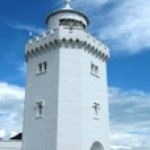 hillsiderParticipant
hillsiderParticipantLike our colleague wristpin I must hold my hand up as someone who has used Copper based anti seize compounds on Aluminium threads and has never noticed any ill effects. I see that Molyslip provide a product named Alumslip for jobs where the presence copper is not wanted but they don’t specify when that might be.
My biggest battle over the years has been trying to persuade people who should have known better that copaslip type products should not be used as the primary lubricant when assembling bearings/bushes.
Here are links to data sheets for two products that I have used successfully for years.https://www.molyslip.co.uk/anti_sieze_compounds/
https://www.lubadmin.com/upload/produit/FichePDF/lang_1/408.pdf
January 10, 2014 at 11:07 am #5006 wristpinParticipant
wristpinParticipantMy biggest battle over the years has been trying to persuade people who should have known better that copaslip type products should not be used as the primary lubricant when assembling bearings/bushes.
I second that, it’s copper based anti-seize, not grease!
January 10, 2014 at 4:24 pm #5007 darmic1Participant
darmic1ParticipantSlip of the tongue, calling it grease, just the term used in the workshop….. Have seen what happens when its put somewhere it shouldnt be, ie on wiper spindles and wiper ball joints! A guy came in complaining that his newly fitted wiper rods had failed in quite acatastrophic way…… He was amazed when a technician explained the effect copper slip paste has on ball joints and bearings! Was even less happy to be presented with a £270 bill for new rods and links plus labour……
January 10, 2014 at 5:34 pm #5016 hillsiderParticipant
hillsiderParticipantProbably not allowed to use it now as at least one of the ingredients is banned but we used to use White Lead and Tallow for sealing and preventing corrosion on stern tube bearings and rudder bearings and Hull fittings etc. This or Red Lead mixed up into a paste with linseed oil was also used on Dock gate seals and other areas that were prone to being submerged in the sea.
Ray. -
AuthorPosts
- You must be logged in to reply to this topic.
